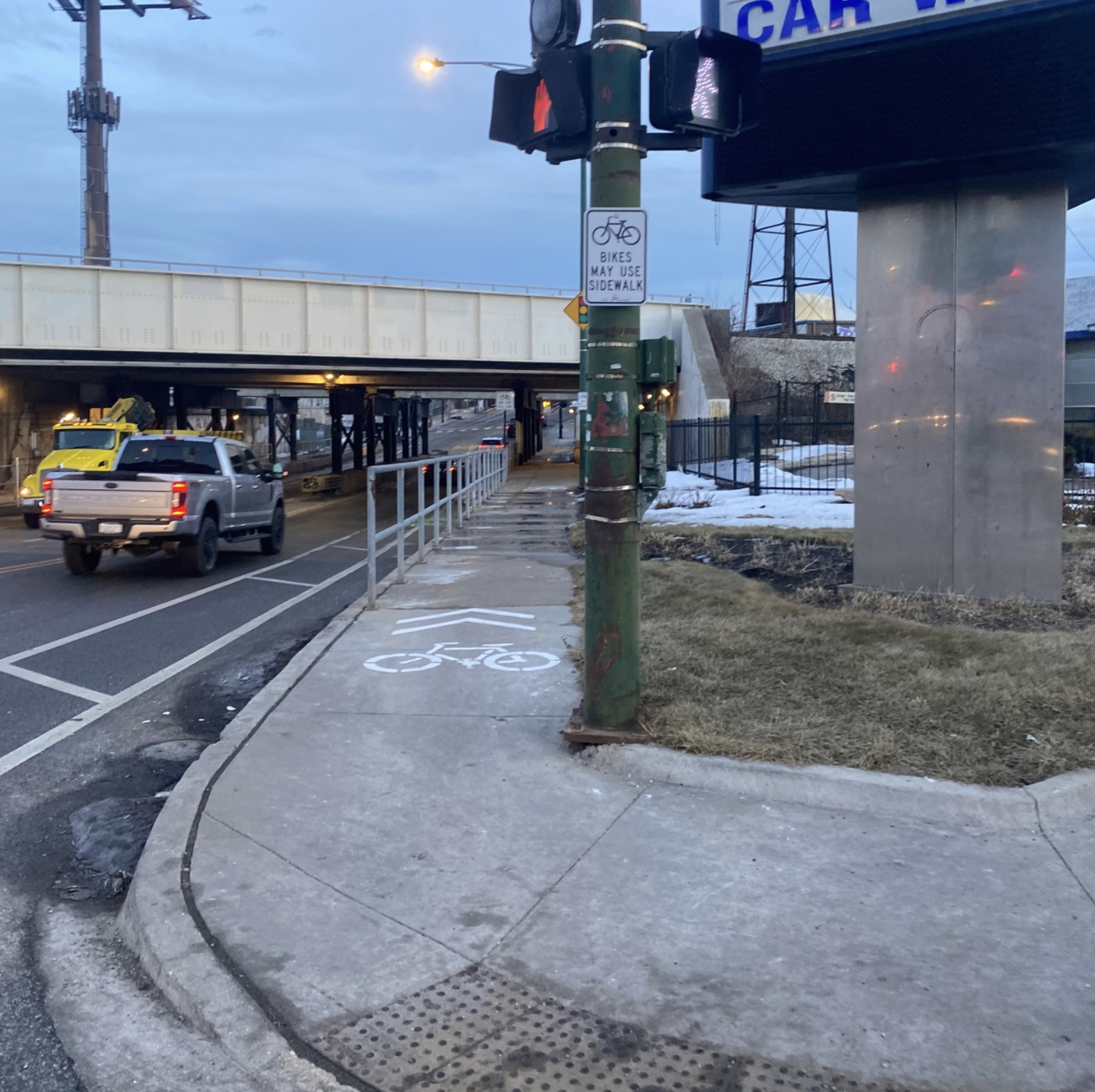Update 2/16/22, 10 PM: CDOT provided the following statement:
The Chicago Department of Transportation (CDOT) is committed to maintaining safety for all users of the right of way, and this remains our top priority. CDOT is aware of the concerns raised by residents regarding the location on Halsted. The recent installation of signage and pavement markings provide people biking northbound on Halsted the option to ride on the sidewalk under the viaduct. Cyclists using the sidewalk should yield to pedestrians. CDOT also relocated the sidewalk railing to create more space on the sidewalk and installed a temporary ramp to transition comfortably from the sidewalk to the Halsted protected bike lane.
This week there was some news from Chicago's Bridgeport neighborhood that scandalized many residents. No, I'm not talking about the conviction of local alderperson and Daley dynasty scion Patrick Daley Thompson (11th) for banking fraud.
Rather, it was revealed that the Chicago Department of Transportation responded to protests over the removal of a section of bike lane on Halsted Street by stenciling bike symbols on the sidewalk, with a sign clarifying that it's legal to ride bikes there. Judging by reactions on social media, plenty of bike advocates were angered by this move.
First, some background on the issue. In 2020, community groups and civic organizations unsuccessfully lobbied the city of Chicago to reject a zoning change for a 112,000-square-foot Amazon warehouse on the south bank of the South Branch of Chicago River west of Halsted and north of Archer Avenue. They argued that the Southwest Side already had many fulfillment centers and other industrial sites that contribute to air pollution in the area and create dangerous conditions for walking and biking, and called for a moratorium on logistics facilities on the South, Southwest, and West sides.

in December 2021, the Chicago Department of Transportation scraped out the northbound Halsted bike lane in the Orange Line and Metra viaduct, just south of the river, to make room for a northbound left-turn lane at a new stoplight to facilitate left turns by truckers heading west into the Amazon facility and minimize delays for other motorists.
After removing the bike lane segment, CDOT marked green boxes with “sharrows,” bike-and-chevron symbols. However, since through traffic now merges right into the curb lane to get around the left turn bay, this new layout increased the risk of bike riders being struck from behind.
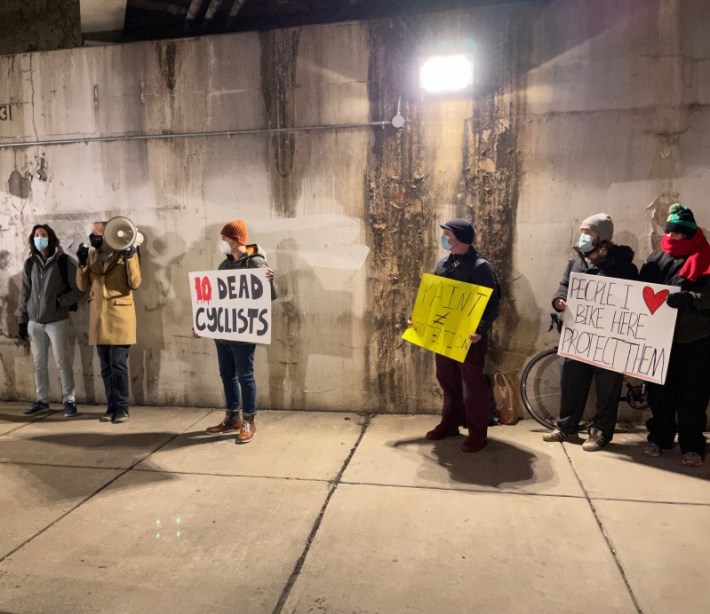
On December 29, dozens of advocates showed up for a protest against the safety downgrade organized by the 11th Ward IPO, Bridgeport Alliance, and Better Streets Chicago (of which Streetsblog Chicago co-editor Courtney Cobbs is a co-founder). "Since there seems to be no political will to create what’s really needed here, a barrier-protected bike lane, at the bare minimum CDOT should install signs warning people on bikes they’re entering a dangerous bottleneck," Courtney argued in her writeup of the demonstration.
It appears that the transportation department got the message, sort of. Yesterday a Streetsblog reader tweeted out photos of new sharrow stencils on the east sidewalk of Hasted, next to the location where the bike lane was removed, as well as a sign posted at the northeast corner of Halsted/Archer reading, "Bikes May Use Sidewalk."
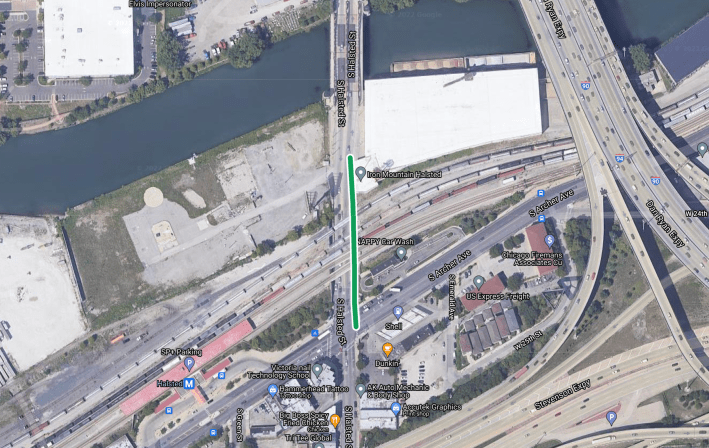
A few commenters argued this was a reasonable solution, which legalizes the strategy many cyclists are already using. "In reality, a lot of bike riders use the sidewalk there anyway," said one respondent. "It seemed like I was the only bike rider to use the street."
"Northbound or southbound, for 16-plus years of regularly riding Halsted at Archer, I already used the sidewalk, as even before the recent additional warehouse traffic, that viaduct was a potential death-trap," tweeted Northwestern history and literature professor Bill Savage. "Realism is safer than anything else."
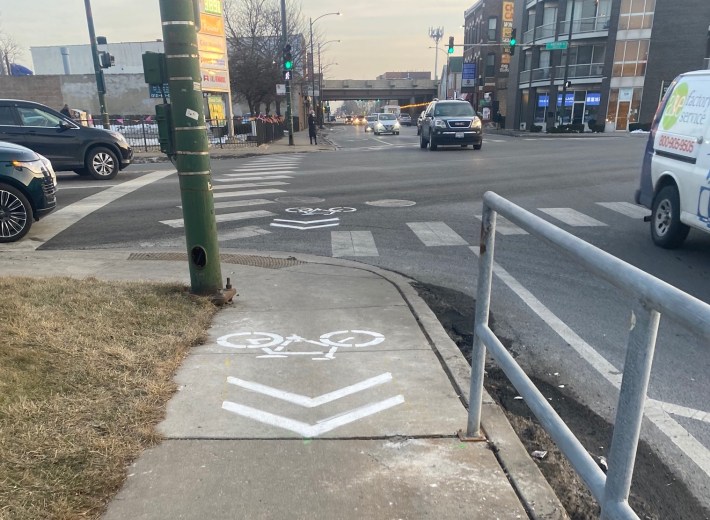
But the Better Streets Twitter account argued CDOT's approach was unacceptable.
Making pedestrians and cyclists fight for scraps isn’t a solution. https://t.co/oaxwmWVvzb
— Better Streets Chicago (@chi_streets) February 16, 2022
Many other commenters seemed to share that opinion. Here are a few more tweets:
- "@ChicagoDOT: this is not bike infrastructure. Take space from cars and prioritize not driving." – @ProvocCities
- "The city of chicago making sure they absolve themselves of the pending wrongful death lawsuit that is sure to come. Good work @cdot." – @jaredverbikes
- "What a f---ing joke" – @mateovonchicago
Others wondered if the sidewalk bikeway will actually be rideable after snowstorms, since CDOT doesn't have a great track record for fulfilling its responsibility to clear sidewalks next to viaducts and bridges.
"It’s actually a reasonable solution for under the bridge in a low-pedestrian area," commented Hyde Park bike advocate Steven Lucy. "The problem is on the other end when you get run over or 'right-hooked' trying to merge back into traffic."
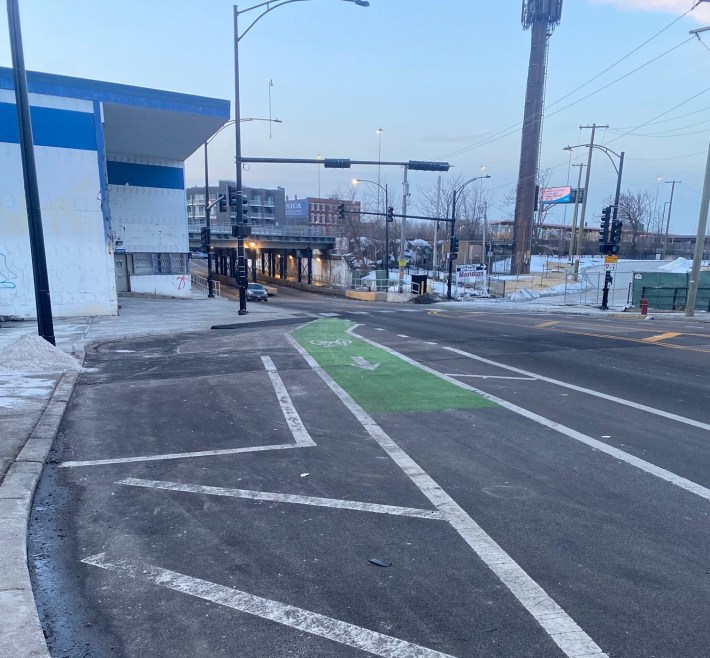
Right-hook crashes won't be an issue at the location where northbound cyclists on the Halsted sidewalk will return to the on-street bike lane, since there's no eastbound cross street there for northbound drivers to turn right onto. However, those bike riders will need to check for traffic behind them before reentering the roadway.
Asked another commenter, "Does this mean I have to use the sidewalk or it's optional?" The original poster noted that it appears that cyclists are encouraged to either ride on the sidewalk or in the road, since the on-street sharrows haven't been scraped out. There's also a "Bikes May Use Full Lane" sign, making it clear that cyclists can ride in the middle of the travel lane if they choose.
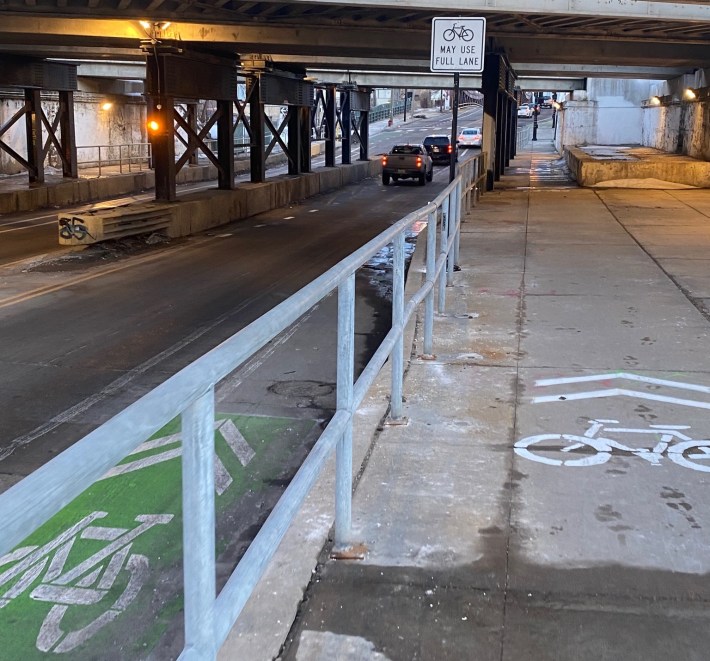
We've asked the city for background on the decision to create the sidewalk bike route, and whether this is the permanent solution, or other bike interventions are planned. A city official said, "We are making some modifications there," and promised to provide more info in the near future. This post will be updated once we receive it.
